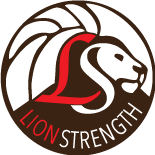Muscle Fibers and Uses
Intro to Muscle Fibers:
There are three different muscle fibers:
The first one I’m going to discuss is type 1 muscle fiber. This fiber is red in pigment (color) due to it’s content of myoglobin. Myoglobin is a globular like protein that reversibly binds oxygen molecules. While myoglobin is present in other fibers, it is prominent in type 1, red, slow-twitch muscle fibers. These fibers take three times as long to react to stimulation than that of fast-twitch fibers. Type 1 fibers are mainly for endurance purposes, and they are prominent in the back and legs. These muscles, along with our skeletal structure, are what keep us erect. While they take longer to fatigue, their power output is low. One could argue that due to their make up, containing larger amount of capillaries, they use the oxidative pathway to reproduce ATP. Typically someone who is involved in endurance type of activities, like a marathon runner, will have a leaner body. You could say that this type of person could be classified as an ectomorph. A training routine for an individual of this caliber would consist of high repetition exercises along with long distance 2-3 mile runs on alternate days 2-3 times a week. The amount of miles will increase as this individual is preparing for a marathon and weekly totals could escalate to 20 miles.
Type 2A muscle fibers are white in color. They metabolize anaerobically, and are used for short bursts of power. Utilizing glycolytic and ATP/CP pathway to regenerate ATP, these fibers are fast twitch activating within .01 second or less. People who are involved in weight training and powerlifting call on these fibers in order to be able to lift the amount of weight they need to. Type 2A fibers are larger in diameter than that of type 1, and are therefore stronger. Also, these fibers have greater potential to grow in size than that of type 1. The type of workout would vary for an individual depending on what he is trying to accomplish. If his goal is to get bigger, he would need to perform exercises at a rate that is best suited for hypertrophy with repetitions ranging from 6-12 and sets between 3 to 6.
The third type is what is classified as intermediate type 2B fibers. They are of a pale, pinkish color due to the fact that they are a mixture of type 1 and type 2A. They contain a lower amount of myoglobin than that of type one but more than type 2A. Also, intermediate fibers have a larger amount of capillaries around them, and much like type 1 fibers, these are more resistant to fatigue than type 2A.
The type of fibers and the amount of fibers each individual receives are based on genetics. Unlike fat cells, muscle fibers cannot be increased, but they can be enlarged. In addition to this, it has been shown that if a fast twitch muscle fiber is continually used for mainly endurance events, it will take on the characteristics of and ability of intermediate fibers. We can see from here that even though the type and amount of fibers we receive are genetic, it is not the final word. It is dependent on us and how we train while some people will find other events or sports easier our training is what determines the final outcome.












Simply wish to say your article is as surprising.
The clarity in your post is just spectacular and i can assume
you’re an expert on this subject. Well with your permission
let me to grab your RSS feed to keep up to date with forthcoming post.
Thanks a million and please carry on the rewarding work.
Also visit my site :: HT-Rush natural muscle boost
Terrific post however I was wondering if you could
write a litte more on this subject? I’d be very grateful if you could
elaborate a little bit further. Bless you!